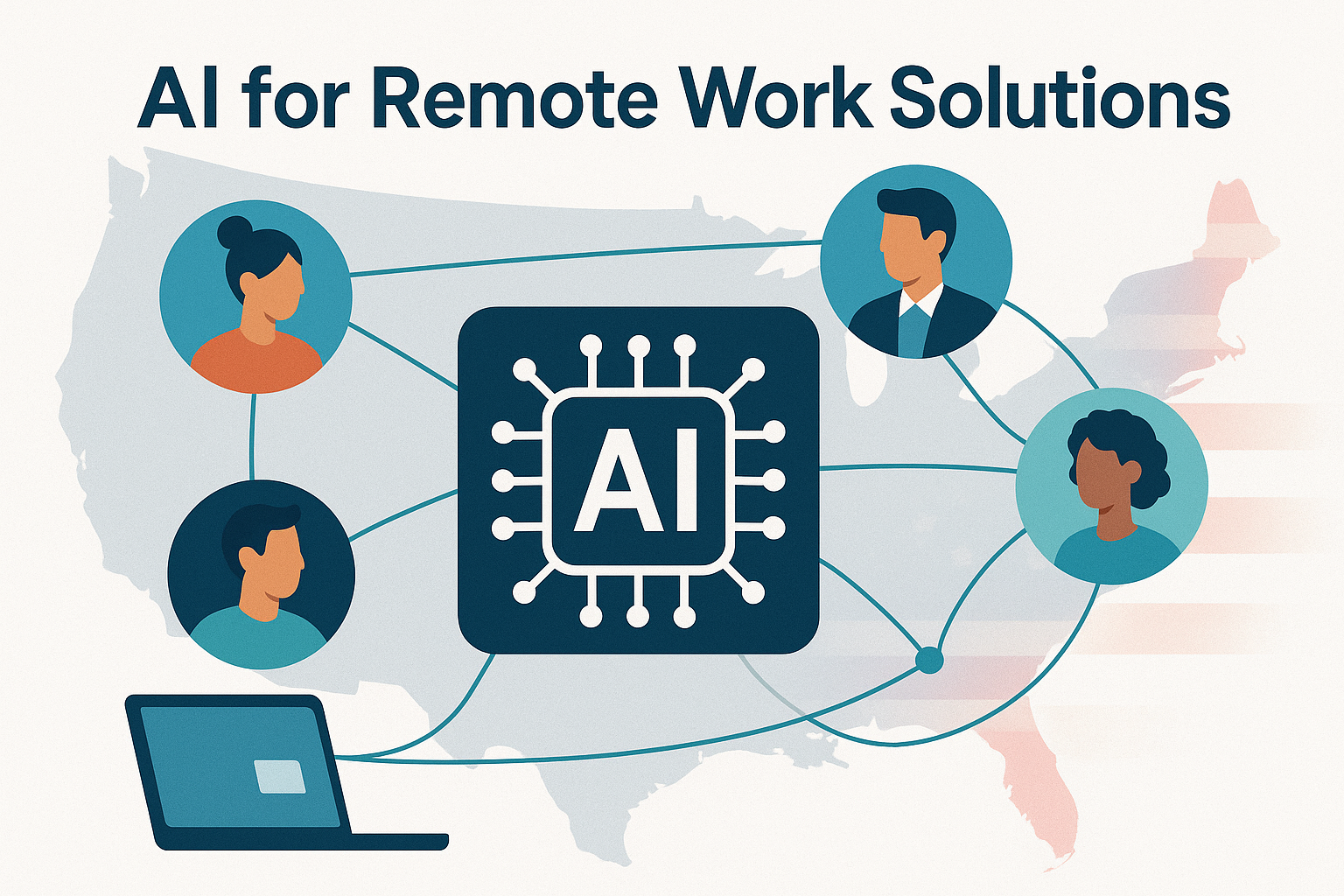
AI for Remote Work Solutions: Transforming the Modern Workplace in 2025
The landscape of remote work has evolved dramatically in recent years, and in 2025, AI for remote work solutions is at the forefront of this transformation. From automating repetitive tasks to enhancing collaboration and security, artificial intelligence is revolutionizing how teams operate across distances. This comprehensive guide explores the latest trends, top tools, and best practices for leveraging AI to supercharge your remote workforce in the United States.
Why AI for Remote Work Solutions Matters in 2025
Remote work is no longer a temporary fix—it’s a permanent fixture in the American workplace. According to the latest U.S. data, over 40% of the workforce engages in remote or hybrid work. AI-driven solutions are essential for:
- 📈 Boosting productivity and efficiency
- 🔒 Enhancing cybersecurity for distributed teams
- 🤝 Improving communication and collaboration
- 🕒 Automating time-consuming administrative tasks
TIP: Embracing AI for remote work solutions can give your business a competitive edge by streamlining operations and improving employee satisfaction.
Top 10 AI Tools for Remote Work Solutions in 2025
Selecting the right AI-powered tools is crucial for maximizing the benefits of remote work. Here are the Top 10 AI for remote work solutions ranked for U.S. businesses in 2025:
- Slack AI
- Zoom AI Companion
- Microsoft Copilot for Teams
- Notion AI
- Otter.ai
- Trello AI
- Grammarly Business
- Monday.com AI
- Krisp AI
- Turing AI Talent Cloud
Side-by-Side Comparison Table
| Rank | Tool Name | Best For | Key AI Features | Pricing (2025) |
|---|---|---|---|---|
| 1 | Slack AI | Team Collaboration | Smart summaries, workflow bots | From $8/user/month |
| 2 | Zoom AI Companion | Video Meetings | Live transcription, smart recaps | From $15/user/month |
| 3 | Microsoft Copilot | Productivity Suite | AI meeting notes, task automation | From $12/user/month |
| 4 | Notion AI | Knowledge Management | Content generation, Q&A | From $10/user/month |
| 5 | Otter.ai | Transcription | Real-time notes, speaker ID | From $8.33/user/mo |
| 6 | Trello AI | Project Management | Smart cards, workflow suggestions | From $6/user/month |
| 7 | Grammarly Business | Communication | AI writing assistant, tone check | From $12.50/user/mo |
| 8 | Monday.com AI | Workflow Automation | Predictive analytics, automations | From $10/user/month |
| 9 | Krisp AI | Audio Quality | Noise cancellation, voice clarity | From $5/user/month |
| 10 | Turing AI Talent Cloud | Hiring Remote Talent | AI vetting, smart matching | Custom pricing |
Key Benefits of AI for Remote Work Solutions
1. Enhanced Productivity and Automation
AI automates repetitive tasks such as scheduling, data entry, and document management, freeing up employees to focus on high-value work.
import openai
def summarize_meeting(transcript):
response = openai.Completion.create(
engine="gpt-4",
prompt=f"Summarize this meeting: {transcript}",
max_tokens=150
)
return response.choices[0].text
TIP: Use AI-powered meeting summarizers to quickly distribute actionable insights to your team.
2. Improved Communication and Collaboration
AI chatbots and virtual assistants facilitate seamless communication, language translation, and real-time feedback, making remote teamwork more effective.
3. Advanced Security and Compliance
With remote work, cybersecurity risks increase. AI-driven security tools monitor for threats, detect anomalies, and ensure compliance with U.S. regulations.
4. Personalized Employee Experience
AI analyzes employee behavior and preferences to offer personalized recommendations, training, and support, boosting engagement and retention.
How U.S. Companies Are Using AI for Remote Work Solutions
Case Study: AI-Driven Project Management
A leading U.S. tech firm implemented Trello AI and Monday.com AI to automate project tracking and resource allocation. The result? A 30% reduction in project delays and a significant boost in team morale.
Case Study: AI-Powered Hiring
A fast-growing startup used Turing AI Talent Cloud to source and vet remote developers. AI algorithms matched candidates based on skills, experience, and cultural fit, reducing hiring time by 50%.
Best Practices for Implementing AI for Remote Work Solutions
1. Assess Your Needs
Identify which remote work challenges—such as communication gaps, workflow inefficiencies, or security concerns—AI can address in your organization.
2. Start Small, Scale Fast
Begin with pilot projects using one or two AI tools. Measure results, gather feedback, and expand adoption as you see positive outcomes.
3. Prioritize Security and Privacy
Ensure all AI solutions comply with U.S. data privacy laws and implement robust security protocols.
4. Invest in Training
Provide ongoing training so employees can fully leverage AI features and adapt to new workflows.
TIP: Regularly update your AI tools and educate your team on the latest features to maximize ROI.
The Future of AI for Remote Work Solutions in the U.S.
By 2025, AI is not just a nice-to-have—it’s a necessity for remote work success. Emerging trends include:
- 🏥 AI-powered wellness monitoring for remote employees
- 📦 Hyper-personalized onboarding and training
- ✅ Predictive analytics for workforce planning
As AI continues to evolve, expect even more intelligent, integrated, and user-friendly solutions tailored for the unique needs of U.S. businesses.
Conclusion
AI for remote work solutions is reshaping the American workplace in 2025, offering unprecedented opportunities for productivity, collaboration, and security. By adopting the right AI tools and best practices, U.S. companies can empower their remote teams, streamline operations, and stay ahead in a competitive market. Whether you’re a startup or an enterprise, leveraging AI for remote work is the key to thriving in the modern digital era. Embrace the future—let AI transform your remote work experience today!